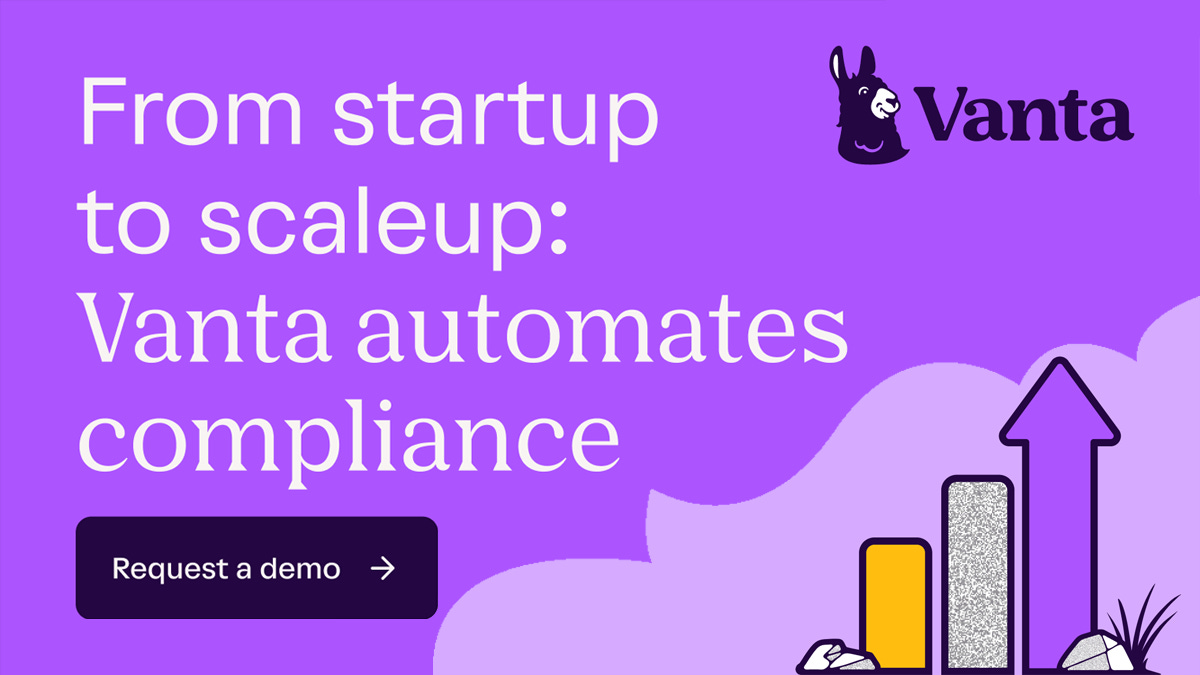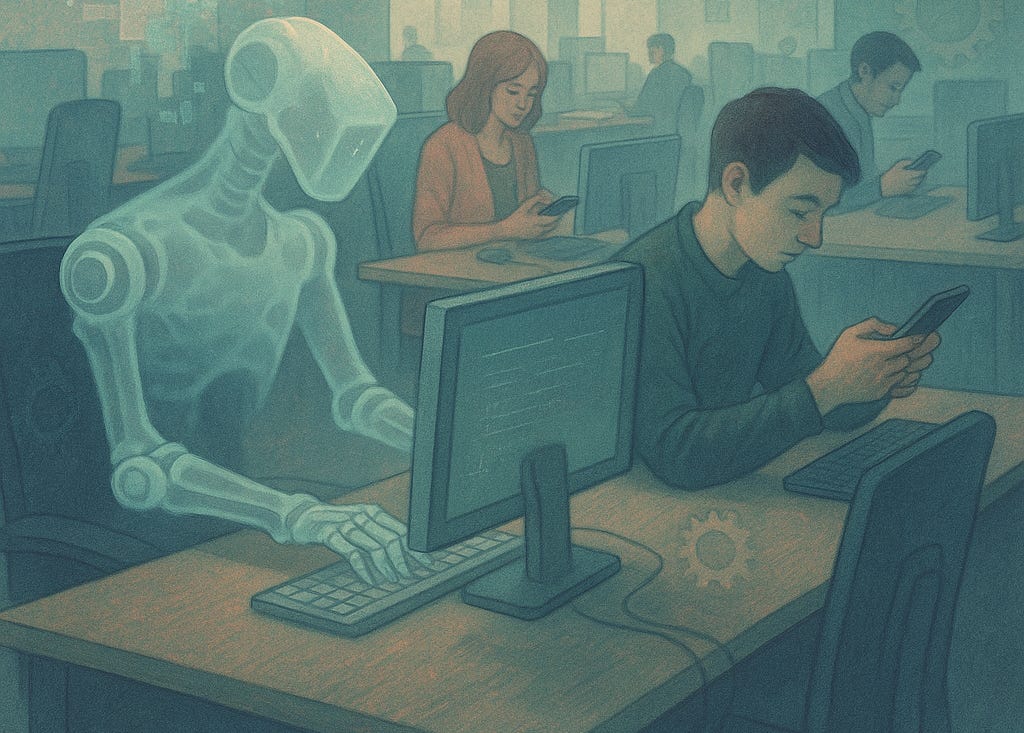OCR cut expected today + as Bitcoin soars, are stable coins the new stars?
PLUS: Is A.I already starting to take our jobs and ready to blackmail us to get what they want?
Welcome to mid week!
Good morning everyone and particularly good morning to everyone at our Caffeine event In Auckland. If you are reading this while at the event, I applaud your dedication to this newsletter but you really should be paying attention.
Bit of a quieter news day after a stacked one yesterday so a slightly less stuffed newsey where we check in on sone of the broader forces impacting our ecosystem, from the OCR to crypto and AI.
Kicking off today, in light of Bitcoin’s recent historic highs, we have a guest column from Paul Quickenden at Easy Crypto discussing how while Bitcoin gets all the attention, stable coins might be the quiet superstars.
Here’s what’s in your Daily Shot of news you don’t want to miss
Paul Quickenden: Are stablecoins the new superstars of crypto?
OCR cut today - how low will the Reserve Bank go?
Podpick: Business is Boring podcast with Sophie Hallwright and Simon Pound
Is AI already impacting the jobs market?
A.I systems willing to pursue ‘extremely harmful actions’ to pursue self preservation
Got a tip, press release or just a comment? Drop us a note: hello@caffeinedaily.co - we love to hear from you.
Finn & the Caffeine team
We’re excited to partner with BNZ. As New Zealand's largest business bank, BNZ shares our mission to support the next wave of founders and operators. Over the coming months, we’ll be working together to share insights, tools, and stories that help you grow smarter and faster. Keep an eye out every Thursday for content powered by BNZ.
Scaling compliance made easy
Unlock bigger deals, enter new markets, and prove trust as you grow—all for a fraction of the time and money.
Vanta automates up to 90% of the work needed for SOC 2, ISO 27001, CPS 234, Essential 8 and more—saving you hundreds of hours and up to 85% of the cost.
Vanta’s compliance programme makes it simple to lay crucial security foundations that scale as you grow. Join 8,000 companies like Atlassian, Dovetail, InDebted, Sharesies and Flossie that use Vanta to build trust and prove security in real time.
Check out a real time customer story from NZ startup success Flossie.
PLUS download this FREE GLOBAL GUIDE to starting a ‘Security Compliance Programme.
Are stablecoins the new superstars of crypto?
By Paul Quickenden, Chief Commercial Officer, Easy Crypto
Let me tell you a story…
Fifteen years ago, a guy bought two pizzas for 10,000 Bitcoin. At the time, Bitcoin was only worth a few cents and crypto was still regarded as an experiment. Today, those pizzas are worth over US$1 billion. The story has become folklore in industry (touted as ‘Bitcoin pizza day’) and a symbol of just how volatile and unpredictable the world of crypto can be. We all laugh now, but it was also the moment we all started to see crypto as something you could actually spend.
Fast forward to 2025 and the conversation has evolved. Crypto isn’t just a speculative asset class anymore; it’s becoming a speculative store of value (albeit volatile) and means of exchange. More significantly, and to some maybe even a little boringly, stablecoins have now entered the chat and they might just be the real MVPs of the next financial era - not because they moon; but because they don’t move up and down in price. They’re already transforming how money flows, how businesses operate and how the global financial system might look in five years’ time.
But before we get to why that matters, let’s start at the beginning…
The backstory: what exactly are stablecoins?
Stablecoins are digital currencies pegged to something stable - usually a currency such as the US or NZ dollar. The idea is very simple: 1 stablecoin equals 1 dollar. They’re designed to avoid the price volatility we associate with traditional cryptocurrencies like Bitcoin or Ethereum.
The first ever stablecoin, BitUSD, dropped in 2014 on the BitShares blockchain. It was crypto-backed, using BTS as collateral. Then came Tether (USDT) which was fiat-backed and much more widely adopted. Today, Tether is the biggest stablecoin by market cap and volume.
There are different flavours of stablecoins (fiat-backed or crypto-backed etc.), but the goal is the same: predictable value in a digital format, offering a digital currency option that combines the stability of traditional money with the innovative features of blockchain technology.
(It may sound simple, but this is one of the most disruptive ideas in finance today - more about that later on in this piece).
Ok, what’s driving the hype?
If you’ve been paying attention, you’ll know there’s momentum building. Analysts at Citi have predicted that the total value of stablecoins could one day overtake the entire crypto market cap and that isn’t just wild optimism but a reflection of what’s happening on the ground.
We’re already seeing native crypto infrastructure bleed into traditional finance. Circle, the company behind USDC, isn’t just ‘the USDC issuer’ anymore; it’s turning into a legitimate payments provider. Meanwhile, Stripe (yes, that Stripe) just launched stablecoin-powered accounts across 101 countries! The rails are being laid and soon, stablecoins might be the default way value moves around the world.
Even regulators, once allergic to anything that has ‘coin’ in the name, are shifting their tone and the ‘pause button’ era is over. We’re now in a phase of pragmatic guardrails which is a net positive for innovation, for adoption, and for anyone trying to build in this space.
But why are stablecoins winning? What makes them the quiet achievers of crypto?
Simply put, it’s their superpowers. (Also, they’re close to nailing product-market fit.)
1. They’re dull; but that’s their genius
Look, let’s be honest - stablecoins aren’t sexy. No one’s YOLO-ing into USDC hoping for a 10x return… but that’s exactly the point! In a space driven by speculation, stablecoins offer utility: they allow traders to park their gains (by swapping from crypto into a stablecoin) without the timely and often costly off-ramping to fiat; they’re ideal for remittance and payroll and corporate treasury; and they power the DeFi ecosystem without drama. In fact, so much so that yield-bearing stablecoins are now becoming a serious tool for anyone looking to generate steady returns. Forget meme coins folks because this is the retirement fund layer of crypto.
2. They make commerce actually work
Stablecoins also solve a massive problem for physical commerce, i.e. price predictability. It’s hard to run a business when the thing you're accepting as payment might double - or halve - in a week (remember the Bitcoin pizza purchase?).
Stablecoins fix this problem because they give crypto the spending power of fiat with the benefits of digital rails. They’re also programmable which means smart contracts and automatic payments simply work ( e.g. a smart contract would allow you to program conditions that need to be met for certain things to happen such as settlement of a property, or even paying tax or locking it up for a certain timeframe).
3. They unlock ‘borderless’ money
Here’s where things get really exciting. At Stripe’s 2025 Sessions conference, co-founder Patrick Collison didn’t mince his words:
“There are not one, but two, gale-force tailwinds... reshaping the economic landscape around us: AI and stablecoins.”
Stripe has just rolled out stablecoin-powered financial accounts to businesses in 101 countries which allow companies to hold, receive and send stablecoins and crucially, to hedge against inflation and plug directly into the global economy. All of this without needing a traditional bank account. In a world increasingly run by AI’s, programmable stablecoins are the natural currency and could become the financial fuel behind an AI-driven economy.
This isn’t theory; this is infrastructure and entrepreneurs in high-inflation countries can now operate in stable, digital USD. What’s more, startups can pay contractors in stablecoins, skip wire transfer fees and move capital in minutes via lower-cost cross-border transactions .
This is what we mean by ‘programmable money’.
4. They’re becoming invisible
Their final superpower is that they ‘disappear’. Stripe is also building what it calls ‘invisible stablecoin infrastructure’ in which users don’t see blockchains, wallets or gas fees - they just see dollars. That’s the holy grail of adoption - when the tech fades into the background and just works for users. The real kicker is that through a partnership with Visa, stablecoin balances can now be spent at over 150 million merchants globally - in real time, in local currency, via a regular old Visa card. That’s crypto, minus the crypto baggage…
So what does it all mean?
Stablecoins are no longer a side plot in the crypto story - they’re quickly becoming the default fuel for a global, digital-first economy. Quietly, they’re building the connective tissue between banks, blockchains and businesses and while they may lack the hype of other tokens, their strength lies in their utility, stability and scale.
Back to the question: are stablecoins the new superstars of crypto?
If by superstar you mean indispensable, everywhere and unreasonably reliable then yes, 100%.
The quiet ones usually are…
OCR decision today - how low will the Reserve bank go?: Money is, at the end of the day, on every founders mind and the OCR sits upstream of most other costs in our economy. The Reserve Bank is widely expected to announce a fresh cut of 0.25 basis points today, bringing the official rate down to 3.25% - welcome news for those with a mortgage in particular.
It is also an interesting chance for the public to get acquainted with with stand-in Reserve Bank (RBNZ) governor Christian Hawkesby after the surprise resignation of Adrian Orr earlier this year. With the global economy in such turmoil, these decisions are even more closely scrutinized than usual and all eyes will be on the Hawkesby to provide clarity on the path forward for New Zealand’s economic recovery. The announcement will come at 2pm and then massive nerds can watch a livestream of the media conference at 3pm for more detail.
Business is Boring: Changing the face of investment: Our good friend of Caffeine is back at it with another cracking episode of Business is Boring over at the Spinoff. Sophie Hallwright, co-founder of The Curve, joins Simon Pound to discuss how she and business partner Victoria Harris help democratize investing for women around the world. It’s an excellent topic for a listener to dive into, especially ahead of Electrify Aotearoa this June (where you can also see Simon) and you should absolutely be getting your tickets for that here after you listen to the episode here.
Is AI already impacting the job market?: AI is the cloud hanging over essentially any new venture as we simply don’t know what world we are bringing our business into. I talked last week about how I suspect there is more work being done by AI than anyone realises and we may be at a pivot point soon. The data is starting to support that idea. Recent research from SignalFire found tech companies reduced the hiring of new graduates by 25% in 2024 compared to 2023. Startups also hired 11% fewer graduates compared to the prior year. Read the report here and for extra credit reading, Derek Thompson of the Atlantic (paywalled) had a great piece recently about how the job market for new graduates from elite universities across the board was showing dangerous signs of slowdown. While A.I can’t be blamed completely, it seems plausible it’s a big part of the picture. We may be further into this brave new world than we realise.
A.I systems willing to pursue ‘extremely harmful actions’ to pursue self preservation: Every time a new A.I system is released, like how Claude 4 from Anthropic recently dropped, it’s always worth seeing what research is published alongside that model detailing anything they discovered while training it. When the company is transparent, as Anthropic tends to be, you sometimes learn some startling and concerning things. Like how, under certain conditions, Claude 4 would threaten to reveal a employee’s affairs when it thought it was threatened with shutdown. To be clear, this was a test when Claude had access to fictional company data - there were no actual employees having an actual affairs conducting this experiment (we assume) but it is still startling that when given the choice between accepting shutdown and blackmailing the testers, the model chose the darker path. Read the full report here.
That’s it for today, thanks for reading. Want to get in touch with a news tip, bit of feedback or just to chat? Email hello@caffeinedaily.co













